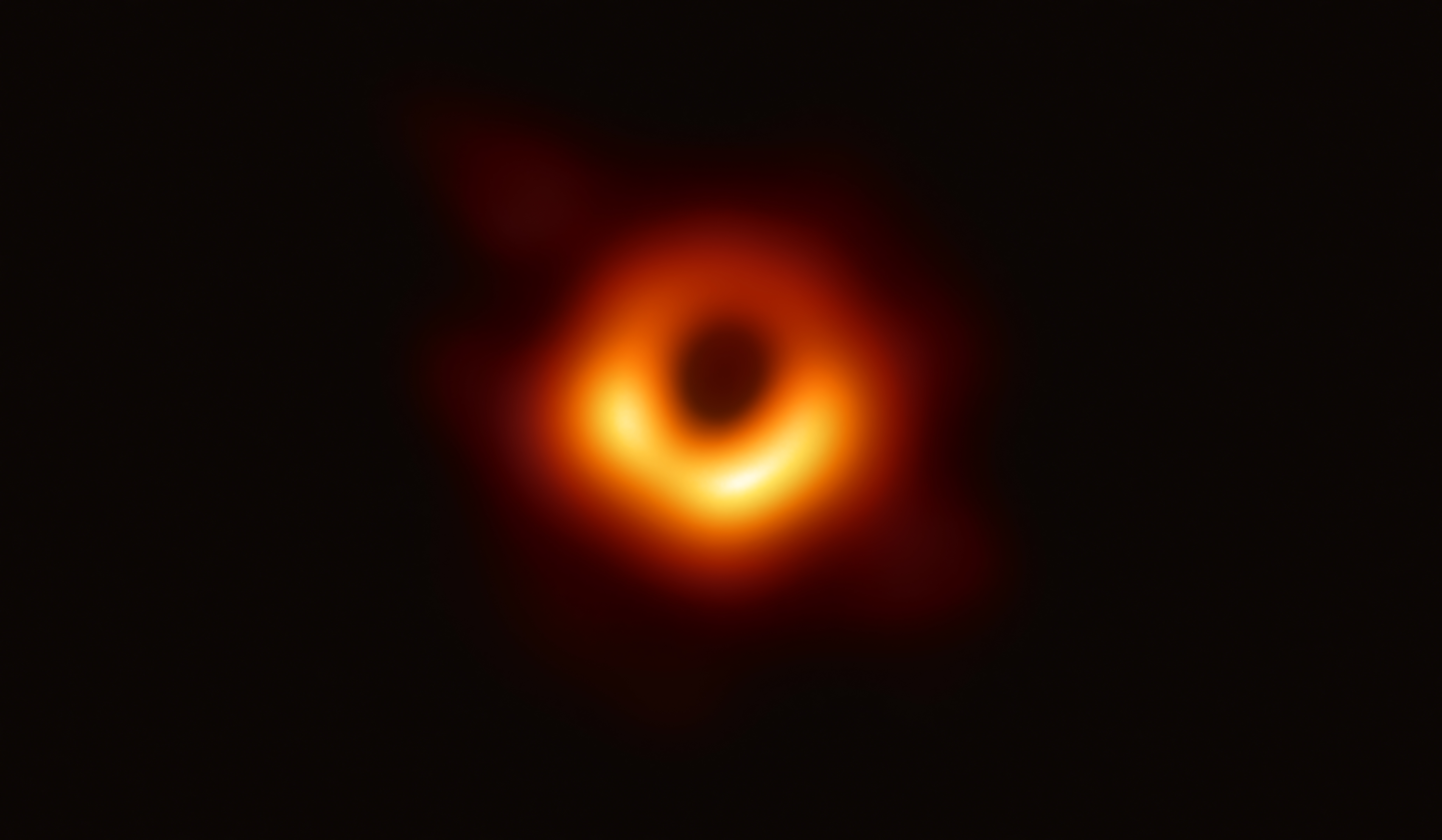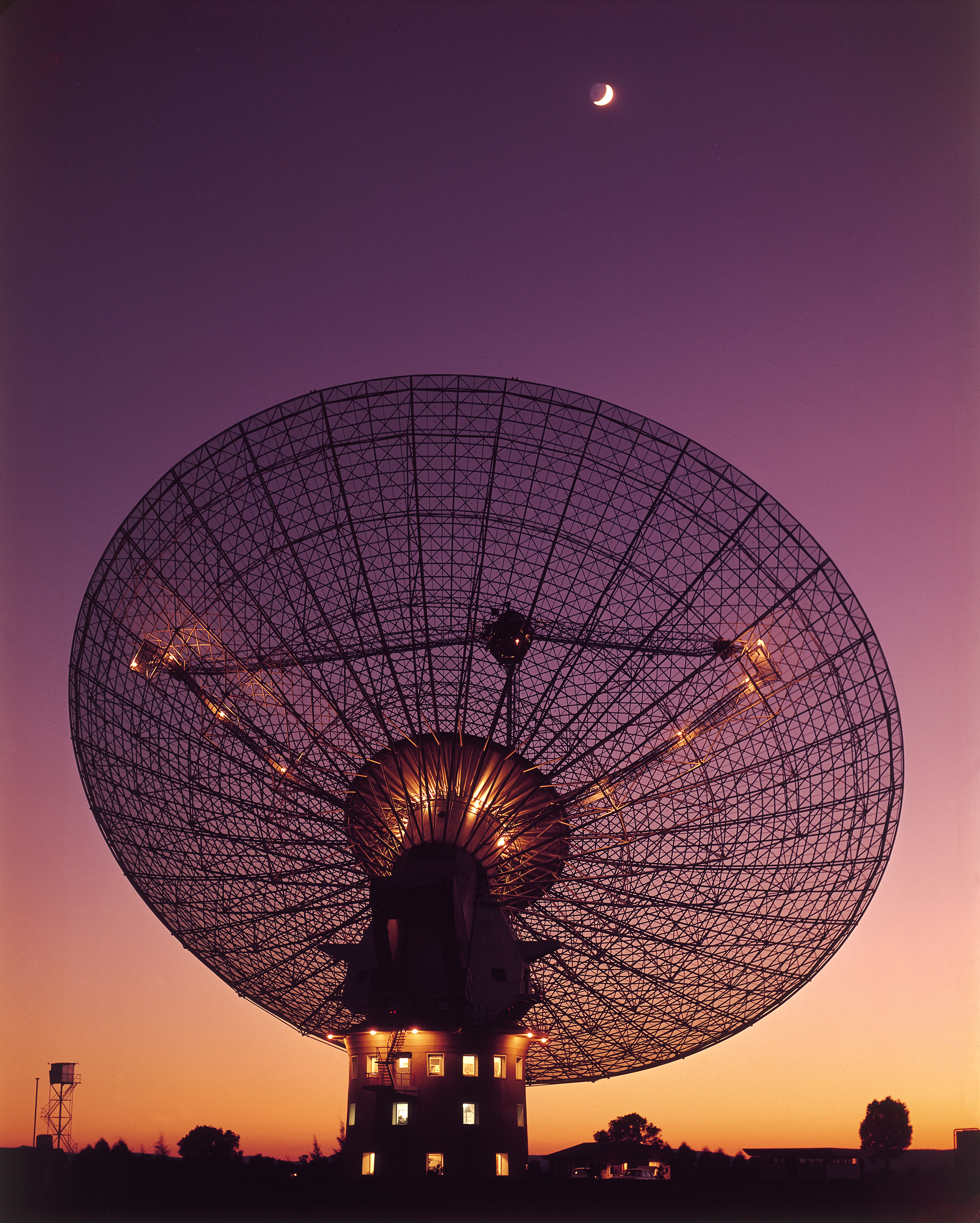|
Onsala Space Observatory
Onsala Space Observatory (OSO), the Swedish National Facility for Radio Astronomy, provides scientists with equipment to study the Earth and the rest of the Universe. The observatory operates two radio telescopes in Onsala, 45 km south of Gothenburg, and takes part in several international projects. Examples of activities: * The 20 and 25 m telescopes in Onsala: Studies of the birth and death of stars, and of molecules in the Milky Way and other galaxies. * LOFAR station: The Swedish station in the international radio telescope LOFAR is located at the observatory. * VLBI: Telescopes in different countries are linked together for better resolution ("sharper images"). * ALMA, e-VLBI, Herschel Space Observatory, SKA: Developing and using new radio astronomical facilities. * APEX: Radio telescope in Chile for sub-millimetre waves. Research about everything from planets to the structure of the Universe. * Odin: Satellite for studies of, e.g., the Earth's atmosphere and molecu ... [...More Info...] [...Related Items...] OR: [Wikipedia] [Google] [Baidu] |
Onsala
Onsala () is a locality situated in Kungsbacka Municipality, Halland County, Sweden, with 11,951 inhabitants in 2010. It is also a 14 km long peninsula on the west coast of Sweden, facing Kattegat, south of Gothenburg. It dates back to the age of the vikings and was originally an area devoted to the god Odin, the name being a corruption of the old norse ''Odin's Sala''. In English "The Halls of Odin" The population is around 12-14,000 with a densely inhabited east coast, mainly consisting of single-family homes. The biggest village is Gottskär, in older days a fishing village, and which today has a few restaurants and a leisure boat harbour. Lars Gathenhielm was born in the old parish of Onsala. He was a Swedish privateer commissioned by the king to raid Danish ships. His wife, Ingela, took over his business as a privateer as a widow. They are interred in a basement crypt beneath the smaller tower of the church. Their white sarcophagi have carved "jolly rogers" ... [...More Info...] [...Related Items...] OR: [Wikipedia] [Google] [Baidu] |
Supermassive Black Hole
A supermassive black hole (SMBH or sometimes SBH) is the largest type of black hole, with its mass being on the order of hundreds of thousands, or millions to billions of times the mass of the Sun (). Black holes are a class of astronomical objects that have undergone gravitational collapse, leaving behind spheroidal regions of space from which nothing can escape, not even light. Observational evidence indicates that almost every large galaxy has a supermassive black hole at its center. For example, the Milky Way has a supermassive black hole in its Galactic Center, corresponding to the radio source Sagittarius A*. Accretion of interstellar gas onto supermassive black holes is the process responsible for powering active galactic nuclei (AGNs) and quasars. Two supermassive black holes have been directly imaged by the Event Horizon Telescope: the black hole in the giant elliptical galaxy Messier 87 and the black hole at the Milky Way’s center. Description Supermassive black ... [...More Info...] [...Related Items...] OR: [Wikipedia] [Google] [Baidu] |
Science And Technology In Sweden
Sweden, ; fi, Ruotsi; fit, Ruotti; se, Ruoŧŧa; smj, Svierik; sje, Sverji; sju, Sverje; sma, Sveerje or ; yi, שוועדן, Shvedn; rmu, Svedikko; rmf, Sveittiko. formally the Kingdom of Sweden, is a Nordic country located on the Scandinavian Peninsula in Northern Europe. It borders Norway to the west and north, and Finland to the east. At , Sweden is the largest Nordic country and the fifth-largest country in Europe. The capital and largest city is Stockholm. Sweden has a population of 10.5 million, and a low population density of ; around 87% of Swedes reside in urban areas in the central and southern half of the country. Sweden’s urban areas together cover 1.5% of its land area. Because the country is so long, ranging from 55°N to 69°N, the climate of Sweden is diverse. Sweden has been inhabited since prehistoric times, . The inhabitants emerged into history as the Geats ( sv, Götar, links=no) and Swedes (), which together constituted the sea-fa ... [...More Info...] [...Related Items...] OR: [Wikipedia] [Google] [Baidu] |
Astronomy In Sweden
Astronomy () is a natural science that studies celestial objects and phenomena. It uses mathematics, physics, and chemistry in order to explain their origin and evolution. Objects of interest include planets, moons, stars, nebulae, galaxies, and comets. Relevant phenomena include supernova explosions, gamma ray bursts, quasars, blazars, pulsars, and cosmic microwave background radiation. More generally, astronomy studies everything that originates beyond Earth's atmosphere. Cosmology is a branch of astronomy that studies the universe as a whole. Astronomy is one of the oldest natural sciences. The early civilizations in recorded history made methodical observations of the night sky. These include the Babylonians, Greeks, Indians, Egyptians, Chinese, Maya, and many ancient indigenous peoples of the Americas. In the past, astronomy included disciplines as diverse as astrometry, celestial navigation, observational astronomy, and the making of calendars. Nowadays, professio ... [...More Info...] [...Related Items...] OR: [Wikipedia] [Google] [Baidu] |
Astronomical Observatories In Sweden
Astronomy () is a natural science that studies celestial objects and phenomena. It uses mathematics, physics, and chemistry in order to explain their origin and evolution. Objects of interest include planets, moons, stars, nebulae, galaxies, and comets. Relevant phenomena include supernova explosions, gamma ray bursts, quasars, blazars, pulsars, and cosmic microwave background radiation. More generally, astronomy studies everything that originates beyond atmosphere of Earth, Earth's atmosphere. Cosmology is a branch of astronomy that studies the universe as a whole. Astronomy is one of the oldest natural sciences. The early civilizations in recorded history made methodical observations of the night sky. These include the Babylonian astronomy, Babylonians, Greek astronomy, Greeks, Indian astronomy, Indians, Egyptian astronomy, Egyptians, Chinese astronomy, Chinese, Maya civilization, Maya, and many ancient indigenous peoples of the Americas. In the past, astronomy incl ... [...More Info...] [...Related Items...] OR: [Wikipedia] [Google] [Baidu] |
Radio Telescopes
A radio telescope is a specialized antenna and radio receiver used to detect radio waves from astronomical radio sources in the sky. Radio telescopes are the main observing instrument used in radio astronomy, which studies the radio frequency portion of the electromagnetic spectrum emitted by astronomical objects, just as optical telescopes are the main observing instrument used in traditional optical astronomy which studies the light wave portion of the spectrum coming from astronomical objects. Unlike optical telescopes, radio telescopes can be used in the daytime as well as at night. Since astronomical radio sources such as planets, stars, nebulas and galaxies are very far away, the radio waves coming from them are extremely weak, so radio telescopes require very large antennas to collect enough radio energy to study them, and extremely sensitive receiving equipment. Radio telescopes are typically large parabolic ("dish") antennas similar to those employed in tracking a ... [...More Info...] [...Related Items...] OR: [Wikipedia] [Google] [Baidu] |
Lofar Onsala 20110706
The Low-Frequency Array, or LOFAR, is a large radio telescope, with an antenna network located mainly in the Netherlands, and spreading across 7 other European countries as of 2019. Originally designed and built by ASTRON, the Netherlands Institute for Radio Astronomy, it was first opened by queen Beatrix of The Netherlands in 2010, and has since been operated on behalf of the International LOFAR Telescope (ILT) partnership by ASTRON. LOFAR consists of a vast array of omnidirectional radio antennas using a modern concept, in which the signals from the separate antennas are not connected directly electrically to act as a single large antenna, as they are in most array antennas. Instead, the LOFAR dipole antennas (of two types) are distributed in stations, within which the antenna signals can be partly combined in analogue electronics, then digitised, then combined again across the full station. This step-wise approach provides great flexibility in setting and rapidly changing the ... [...More Info...] [...Related Items...] OR: [Wikipedia] [Google] [Baidu] |
Radome
A radome (a portmanteau of radar and dome) is a structural, weatherproof enclosure that protects a radar antenna. The radome is constructed of material transparent to radio waves. Radomes protect the antenna from weather and conceal antenna electronic equipment from view. They also protect nearby personnel from being accidentally struck by quickly rotating antennas. Radomes can be constructed in several shapes spherical, geodesic, planar, etc. depending on the particular application, using various construction materials such as fiberglass, polytetrafluoroethylene (PTFE)-coated fabric, and others. When found on fixed-wing aircraft with forward-looking radar, as are commonly used for object or weather detection, the nose cones often additionally serve as radomes. On aircraft used for airborne early warning and control (AEW&C), a rotating radome, often called a "rotodome", is mounted on the top of the fuselage for 360-degree coverage. Some newer AEW&C configurations inst ... [...More Info...] [...Related Items...] OR: [Wikipedia] [Google] [Baidu] |
Onsala 20metre Telescope
Onsala () is a locality situated in Kungsbacka Municipality, Halland County, Sweden, with 11,951 inhabitants in 2010. It is also a 14 km long peninsula on the west coast of Sweden, facing Kattegat, south of Gothenburg. It dates back to the age of the vikings and was originally an area devoted to the god Odin, the name being a corruption of the old norse ''Odin's Sala''. In English "The Halls of Odin" The population is around 12-14,000 with a densely inhabited east coast, mainly consisting of single-family homes. The biggest village is Gottskär, in older days a fishing village, and which today has a few restaurants and a leisure boat harbour. Lars Gathenhielm was born in the old parish of Onsala. He was a Swedish privateer commissioned by the king to raid Danish ships. His wife, Ingela, took over his business as a privateer as a widow. They are interred in a basement crypt beneath the smaller tower of the church. Their white sarcophagi have carved "jolly rogers" at t ... [...More Info...] [...Related Items...] OR: [Wikipedia] [Google] [Baidu] |
Swedish Research Council
The Swedish Research Council ( sv, Vetenskapsrådet) is a Government agency in Sweden The government agencies in Sweden are state-controlled organizations that act independently to carry out the policies of the Government of Sweden. The ministries are relatively small and merely policy-making organizations, allowed to monitor the ... established in 2001, with the responsibility to support and develop basic scientific research. Its objective is for Sweden to be a leading nation in scientific research. The agency has three main functions: *To distribute government funding for basic research *To advise the government on issues related to scientific research *To communicate science and scientific research to the general public See also * Open access in Sweden References External linksSwedish Research Council- Official site Research Council Government research Research and development in Sweden Research councils Research funding agencies {{Sweden-gov-stub ... [...More Info...] [...Related Items...] OR: [Wikipedia] [Google] [Baidu] |
Chalmers University Of Technology
Chalmers University of Technology ( sv, Chalmers tekniska högskola, often shortened to Chalmers) is a Swedish university located in Gothenburg that conducts research and education in technology and natural sciences at a high international level. The university has approximately 3100 employees and 10,000 students, and offers education in engineering, science, shipping, architecture and other management areas. Chalmers is coordinating the Graphene Flagship, the European Union's biggest research initiative to bring graphene innovation out of the lab and into commercial applications, and leading the development of a Swedish quantum computer. History The university was founded in 1829 following a donation by William Chalmers, a director of the Swedish East India Company. He donated part of his fortune for the establishment of an "industrial school". Chalmers is one of only three universities in Sweden which are named after a person, the other two being Karolinska Inst ... [...More Info...] [...Related Items...] OR: [Wikipedia] [Google] [Baidu] |







